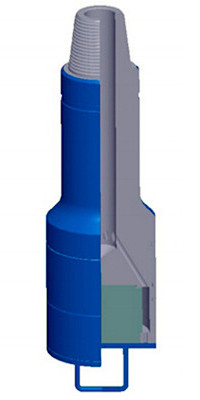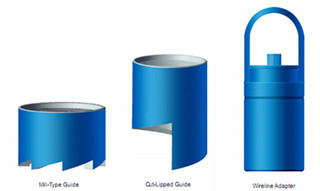Standard Fishing Magnet
Product Detail

Standard Fishing Magnet
Technical Features
The standard fishing magnet is a junk retrieval tool designed to retrieve small metal, oddly-shaped objects such as milling shavings, bit cones, cutter, bearing, slips, tong pins, and hand tools from the bottom of the hole. Typically, these objects are the result of bit failures, an accumulation of mill cuttings, or simply accidental droppings of unmillable objects. In almost all of these cases, the fish cannot be engaged in he normal manner. Fishing magnets can successfully remove these objects from the hole. The tool’s design features generous circulation ports that wash away cuttings and other debris that might interfere with or prevent contact with the magnet. A variety of guides are available to accommodate any retrieval situation.
Construction
The fishing magnet assembly consists of top sub, housing, magnet element, pole plate, and standard flush guide. The body is manufactured from high strength alloy steel. The magnet element is a powerful permanent magnet. Used properly, it will never lose its charge. The magnet body, housing, and pole plate are threaded and welded together during assembly with the magnet element in place. The standard flush bottom guide is threaded and easily removed.
Operation
Fishing magnet are usually run on tubing or drill pipe, but can be run on wireline adapters are available. The fishing magnet is made up to the bottom of the fishing string and lowered into the hole to within six to twelve inches of the fish. Circulate to wash the fish. Reduce circulation and lower the fishing magnet to the fish. Slowly rotate to ensure positive contact. Discontinue circulation and lift the fishing magnet from the hole.
Optional Accessories
A flush guide is standard. Lipped guides and mill guides are also available. The lipped guide centralizes the fish to assure contact with the magnet. The mill guide enables milling of ny soft formation or settling to free debris at the bottom of the hole.
Add: Room 2-1014,3rd building,Deyi international center,No.6 Changqing 2nd road,
Economic and technological development zone,Xi'an,china
Tel/Fax: 0086-29-89612241 Email: Sales@brj-oiltools.com http://www.brj-oiltools.com
